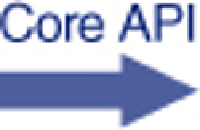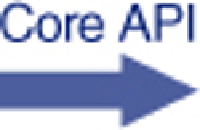HTML and CSS Reference
In-Depth Information
Where's the community?
Anybody with intermediate JavaScript skills can quickly digest Canvas's documentation.
If the official documentation is too complex, you'll find entire websites available with edu-
cational materials. Contrast that with SVG's documentation, which is
massive
, difficult to
comprehend, and aims to tackle a much larger scope. A lot of SVG's documentation can
be difficult to follow, and we had to look for articles that translated what we read into easy
explanations. Searching online for SVG tutorials led to more woe, because few experts are
writing on the subject.
Entire libraries for Canvas seem to materialize overnight. Its community is growing sur-
prisingly fast and could easily become a major competitor to Flash in the next few years.
Sadly, SVG doesn't have this kind of community involvement yet.
What about JavaScript integration?
When it comes to creating complex applications, Canvas handles JavaScript integration
much better than SVG, because Canvas doesn't interact with the DOM. For instance, if
you want to update SVG elements, they'll need to be loaded into the DOM, processed, and
then injected into the page. Although programmers may find some advantages to using the
DOM, it also adds a thick layer of extra coding many won't enjoy. Look at the next listing,
where you can see how much code it takes to update a square with Canvas versus SVG.


